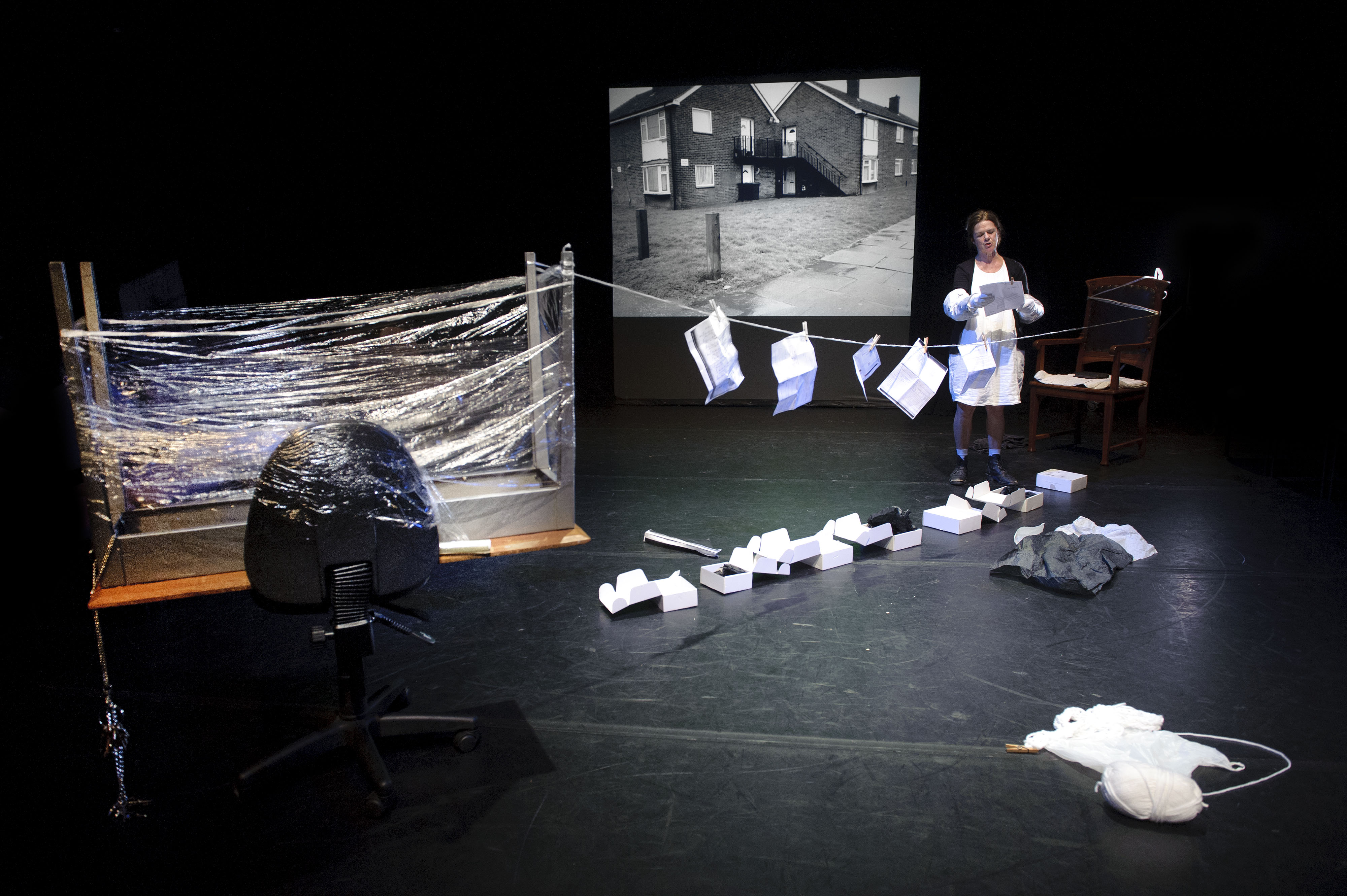The House – hatches, matches and dispatches
We are delighted to publish a guest post from Janice Wilson, Blue Badge tourist guide and volunteer at Heron Corn Mill. Janice saw a performance of The House in the barn at Heron Corn Mill on 24th November.
(photograph courtesy of Joel Chester Fildes)
Our home offers an individual a haven, a place of safety and tradition, for those who live in institutions, a house can provide a refuge, set alongside rituals, and systems that strip away ownership.
Exploring the lives of poor women, Carran Waterfield embarked on a personal genealogical search to unravel the details of her Grandmother’s life and its institutional longevity. It would be easy to contain the story within the family, staying true to its characters and its impact on them and on future generations by simply following the theme of ‘the poor’ from workhouse to hospital, from living off the parish and to the introduction of the contemporary welfare system, and to examples of poverty in a modern world.
Whilst embracing an important part of our history – determined by Poor Law – the personal journey is introduced by hatches, matches and dispatches, and extracts of archived material released from the confines of acid free paper and strong boxes, delivered in a variety of media, and at differing costs. The scene is set in Black and White, much like the documentation and legislation that determines the framework of life, whatever the decade, and whatever is socially acceptable. Initially using the comfort of crib cards to deliver the facts, and then moving away from the family story, Carran strips away the garments of modern life, respectfully hanging them, pausing for a moment of remembrance, as if to return.
By taking on the garb of the many characters, the personal story is cleverly punctured and transports the audience from one decade to another and back again without fracturing the storyline. It is a clever tapestry, the characters reach out to you, many you feel you have met in your life – they offer reminders of people, past, present, poor and of course the contrast of the well-to-do.
The characters also illustrate and echo the Harvey – Waterfield journey acting as the conduits of the bigger picture. In this great tapestry meet the well-meaning community fundraiser, the matron, the realistic woman with the fading fairy dreams of a young girl, those who got the short straw in life. Remember too, the benefactors and the framework of life that was carved out through structure, accountability and organisation of such places.
Carran is never short of developing mind-blowing pieces, this is no exception and every attention to detail is employed. Character voices are weak, or should that be poor, shrill, commanding, coaxing, calculating and at times youthfully blasphemous. The language melds into an erratic confusion of characters at times and yet is more vivid for this. The design set and costumes are simple, stylish and meaningful. It is interesting to see the use of cling film, which takes you from a ‘skills development scenario’, with a nod at industrialisation, and then to the benefits system.
The House captures the very essence of being poor, far from being an isolated performance consigned to a short-term storage box, this clever interpretation, perfect in its delivery is worthy of developing into a national tour. Perfect for heritage venues, connecting local communities and people, where workhouses and hospitals existed – the performance could provide the very basis for local exhibitions revealing poor stories from past to present. An important heritage performance about the Poor and developed with poor theatre principles, energy and passion, engaging from beginning to end.


Comments are closed
Sorry, but you cannot leave a comment for this post.